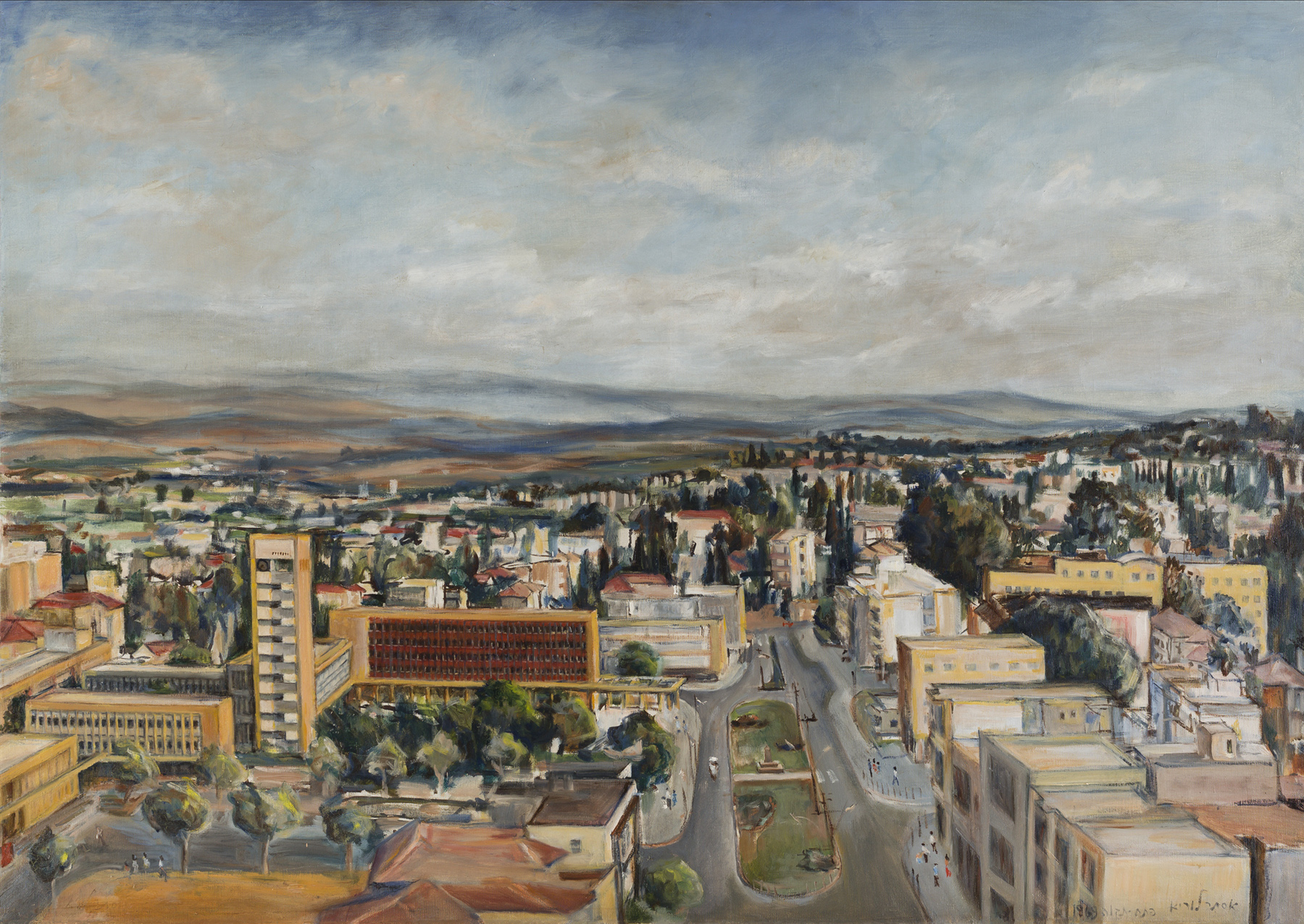


Petach Tikva Landscape; Oil on Canvas, 139×103 cm
Esther Luria
Esther Luria was born in 1913 in Liepaja, Latvia. Between the years 1931-1934 she studied stage design at the Brussels Institute for Decorative Art. Afterwards, she studied painting at the Royal Academy of Fine Arts in Antwerp. In 1934 she immigrated to Palestine and designed the sets of Hateatron Haivri Theatre. During the Nazi regime, she visited her sister in Kaunas, and along with all of the Jews from the city she was sent to a Ghetto – “Ghetto Kovna”. At first, she painted the ghetto’s daily routine, though at some point she was separated from her sister and transferred to a concentration camp. Thanks to her role at the camp – inscribing numbers on people with ink – she managed to continue painting. She mainly painted on white packing paper, given to her by the camp’s doctor.
When the war ended in 1945 she arrived to Italy, where she met soldiers who served in the British army. One of them was painter Menachem Shemi. Due to their encounter, he organized an exhibition of her “camp drawings”, as well as contributing to the release of the book “The Enslaved Jew” that featured many of her works. In the same year she returned to Palestine.
In 1961, she was asked to testify in Eichmann’s trial. However, during an interview for a local paper, she claimed: “I am an Israeli painter and it’s about time I stop being a ghetto painter”. Even though she did not testify, her drawing served as testimony in the trail. Today, her works from the concentration camp can be found in many collections: the Ghetto Fighter’s House Museum collection, Yad Vashem Museum and in various private collections. She passed away in 1988, in Israel.